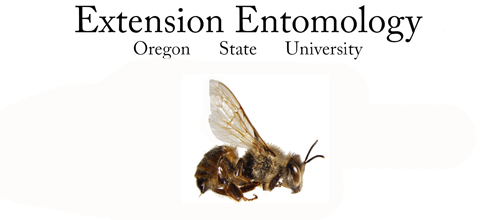| Oregon
State University Insect ID Clinic |
|
|
Honey Bee HomeOSU Insect ID Clinic
DiseasesAmerican Foulbrood PestsBears & other medium to large mammals |
 |
|
Honey Bee Diagnostic ServicesSacbroodCausative Agent: Virus Range: Worldwide Life cycle:
Management:
Misconceptions: Odor is not a reliable method of distinguishing this disease Irregular brood pattern can be a sign of a problem (but not necessarily Sacbrood) Other Useful Sites: Information and Pictures of American, European and Sac brood Diseases Mid-Atlantic Apiculture Research & Extension Consortium Disease Control References used: Root, A. I. (1990) The ABC & XYZ of bee culture 40 th ed. A.I Root Co. Medina, OH. Morse, R.A. & R. Nowogrodzki (eds). 1990. Honey bee pests, predators and diseases . Cornell University Press Ithaca , NY .
|
|
April 3, 2008
Disclaimer